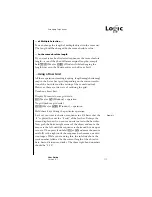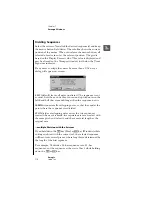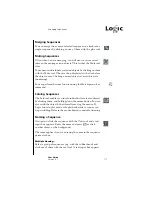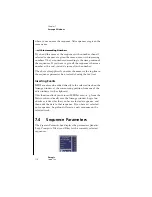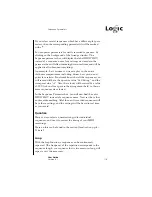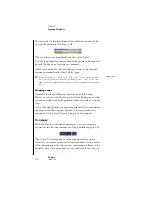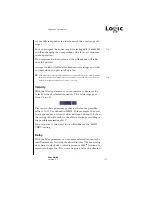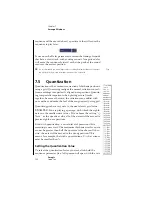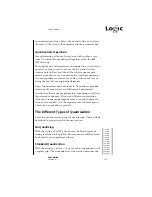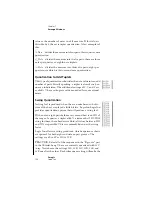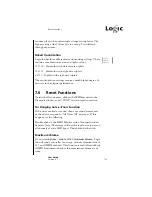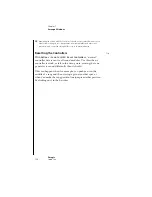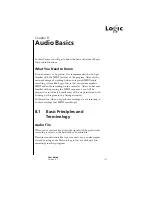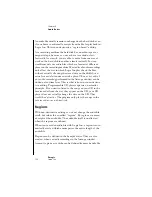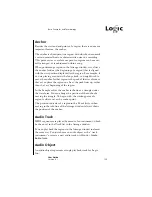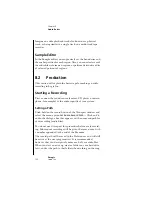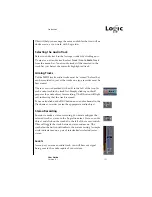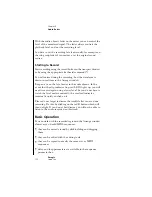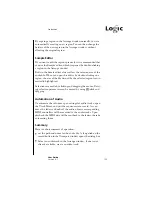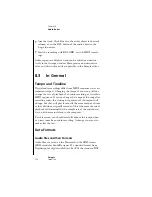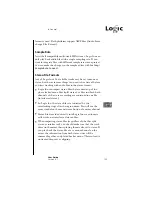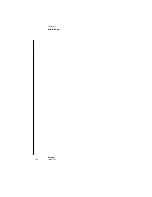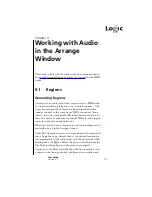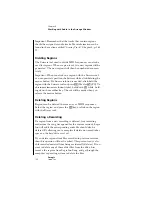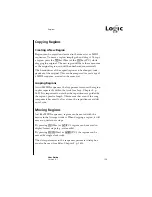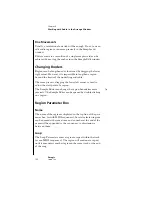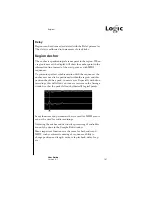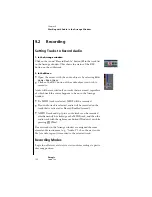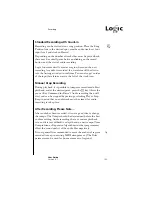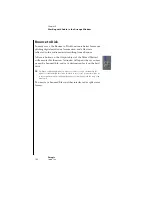
Basic Principles and Terminology
129
User Guide
Version 4.1
r
Anchor
Besides the start and end points of a region, there is one more
important feature: the anchor.
The anchor is a fixed point in a region, with which you can mark
a certain musical beat or a characteristic noise in a recording.
This point serves as a reference point,so regions can be musi-
cally arranged, or synchronized within a song.
When positioning a region in the Arrange window, it is always
the anchor (and not the beginning of a region) that is aligned
with the start position displayed for the region. For example, if
you are placing a sound with a long attack, you might wish to
move the anchor for that region to the peak of the waveform, so
that as you place the region on a beat, the peak lines up, rather
than the very beginning of the region.
In the Sample editor, the anchor is shown as a triangle under
the waveform. You can change the position of the anchor by
moving the triangle. To begin with, the starting point of a
region is always set as the anchor point.
The position indicator of a region in the Event list (or when
moving in the info line of the Arrange window) always shows
the position of the anchor.
Audio Track
MIDI sequences are played by means of an instrument, which
has been set in the Track list in the Arrange window.
You can play back the regions in the Arrange window in almost
the same way. You just choose an audio object as the “track
instrument” or create a new audio track with
Track > Create
Audio Track
.
Audio Object
An audio object represents a single playback track for Logic
fun.
Summary of Contents for Logic fun
Page 1: ...E Sof t und Hard wa re Gmb H l User Guide for Logic fun Version 4 1 March 2000 English ...
Page 2: ......
Page 6: ......
Page 8: ...Emagic Logic fun 8 ...
Page 26: ...22 Chapter 1 Features Emagic Logic fun ...
Page 38: ...34 Chapter 2 Sound Cards and MIDI Emagic Logic fun ...
Page 48: ...44 Chapter 3 Getting Started Emagic Logic fun ...
Page 72: ...68 Chapter 4 MIDI Tutorial Emagic Logic fun ...
Page 96: ...92 Chapter 5 Using Logic fun Emagic Logic fun ...
Page 110: ...106 Chapter 6 Transport Functions Emagic Logic fun ...
Page 140: ...136 Chapter 8 Audio Basics Emagic Logic fun ...
Page 162: ...158 Chapter 10 Mixer and Effects Emagic Logic fun ...
Page 174: ...170 Chapter 11 The Event List Emagic Logic fun ...
Page 206: ...202 Chapter 13 The Score Editor Emagic Logic fun ...
Page 224: ...220 Chapter 15 Video and MIDI Files Emagic Logic fun ...
Page 240: ...236 Glossary Emagic Logic fun ...
Page 256: ...252 Index Emagic Logic fun ...

